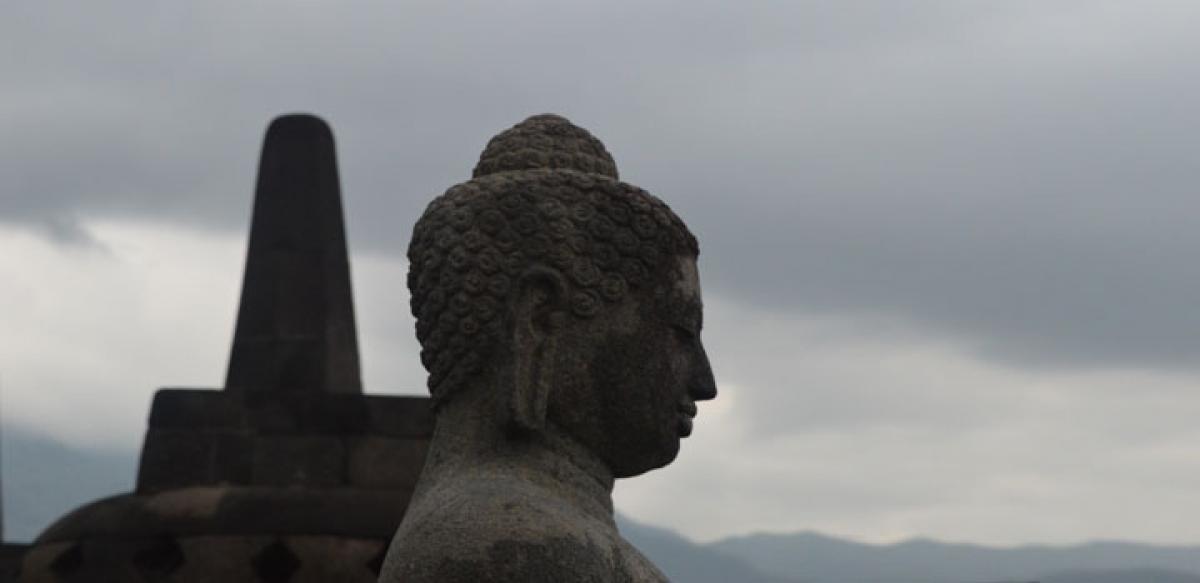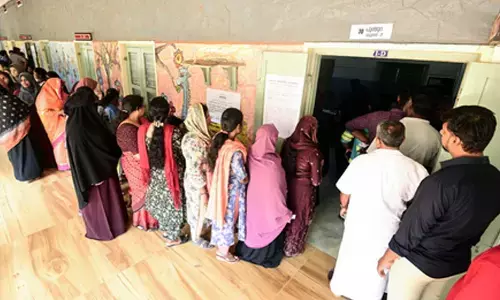Borobudur: A lost culture restored and revered

Standing in front of the Borobudur temple (near Yogyakarta in Indonesia), I was overwhelmed by its splendour and magnitude. I could also sense an immediate “connect” between India and Indonesia: a link that of our cultures, similarities, values and philosophies.
The temple in Indonesia is both a shrine to the Lord Buddha and a place for Buddhist pilgrimage

Standing in front of the Borobudur temple (near Yogyakarta in Indonesia), I was overwhelmed by its splendour and magnitude. I could also sense an immediate “connect” between India and Indonesia: a link that of our cultures, similarities, values and philosophies.
I was much impressed by the total resurrection of a lost legacy, today hailed as the world's largest Buddhist temple as well as one of the greatest Buddhist monuments in the world.
Borobudur is a 9th-century Mahayana Buddhist Temple near Yogyakarta in Central Java, Indonesia. Built in the 9th century during the reign of Sailendra of Sumatra ( Sailendra Dynasty), the temple was designed in Javanese Buddhist architecture, which blends the Indonesian indigenous cult of ancestor worship and the Buddhist concept of attaining Nirvana. The temple also demonstrates the influences of Gupta art that reflects India's influence on the region, yet there are enough indigenous scenes and elements incorporated to make Borobudur uniquely Indonesian.
The journey for pilgrims begins at the base of the monument and follows a path around the monument and ascends to the top through three levels symbolic of Buddhist cosmology that represent three layers of Buddhist theory: Kāmadhātu (the world of desire), Rupadhatu (the world of forms) and Arupadhatu (the world of formlessness which denotes Nirvana or Soonyatha).
The monument guides pilgrims through an extensive system of stairways and corridors with narrative relief panels on the walls and the balustrades. Borobudur has the largest and most complete ensemble of Buddhist reliefs in the world.
.jpg)
The monument consists of nine stacked platforms, six square and three circular, topped by a central dome. The temple is decorated with 2,672 relief panels and 504 Buddha statues. The central dome is surrounded by 72 Buddha statues, each seated inside a perforated Stupa.
From a bird’s eye view the temple is in the shape of a traditional Buddhist Mandala. Central to a great deal of Buddhist and Hindu art, the basic form of Mandala is a square with four entry points and a circular centre point.
Restoration
Evidence suggests Borobudur was constructed in the 9th century and abandoned following the 14th-century due to the decline of Hindu kingdoms in Java and the Javanese conversion to Islam. There is another theory stating that Borobudur was left to the ravages of nature in between the 12th to 14th centuries when the power of Java shifted to the east of the island.
The reason for this shift is unknown but it is often speculated that there was a volcanic eruption and the people moved away. There are manuscripts that relate stories of Javanese revisiting the site in the 18th century. But it was the rediscovery by the British Sir Thomas Stanford Raffles (the then British ruler of Java who was advised of its location by native Indonesians) in 1814 that led to greater recognition and also preservation efforts.
In 1815 Raffles commissioned an initial clean up where 200 labourers spent 45 days felling trees and moving earth from the remains. Documentation and interpretation of the reliefs revealed some Sanskrit instructions left for the carvers. Borobudur has since been preserved through several restorations. The largest restoration project was undertaken between 1975 and 1982 by the Indonesian Government and UNESCO, following which the monument was listed as a UNESCO World Heritage Site
Cinnamon Route
In 1982 a 21 year old Englishman named Phillip Beale (former British Royal Navy) was in Indonesia to study traditional ships and marine traditions. When he climbed the Borobudur Temple he found ten panels depicting sea vessels, indicating that the ships of the Borobudur may have been a part of a famous shipping route that linked Indonesia to Africa many centuries ago. The Cinnamon shipping route took vessels carrying spices from Indonesian waters across the Indian Ocean, past the Seychelles, Madagascar and South Africa to Ghana.
Borobudur is still used for pilgrimage; once a year, Buddhists in Indonesia celebrate Vesak (the birth, enlightenment and passing away of Buddha) at the monument. Isn’t it wonderful that a culture that was lost is not only restored with great care but also celebrated? Do we see a message?
Fact File
Getting there: Air Asia, Air India and Singapore Airlines have good connectivity and reasonable fares. Try to avoid Malaysia Airlines as their flights are often badly delayed with irresponsible and discourteous staff being insensitive to passengers’ needs in times of crisis.
Visa: Free visa on arrival
Currency: 1 Indian Rupee = 207.45 Indonesian Rupiah (one feels like a millionaire here!!)
Stay: Sheraton Yogyakarta Resort and Spa is an absolutely delightful place. Borobudur is 38 km from Yogyakarta city.
Weather: Mostly hot and humid any time of the year. Carry light cottons and sun screen.
Shopping: Batik, puppets, wood carvings and Rattan goods.
Vesak festival in 2016 falls on 21st May.
By:Vijaya Pratap


















